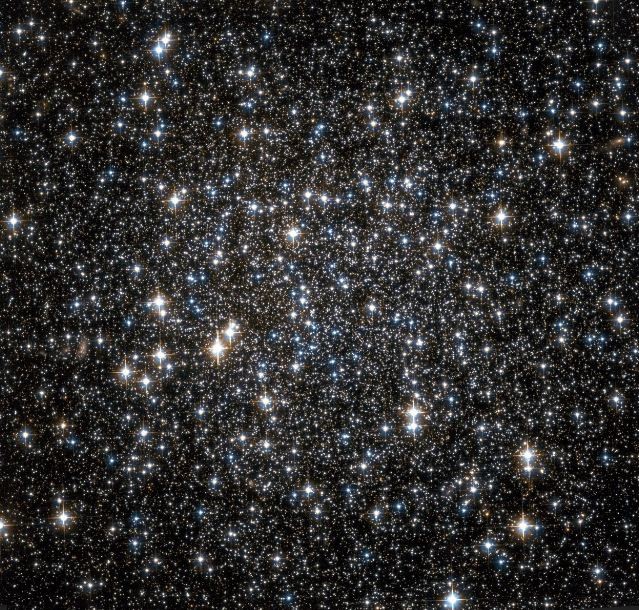New research by the University of Surrey confirms a globular cluster of stars can host several hundred black holes -- a phenomenon that until recently was thought impossible.
Globular clusters are spherical collections of stars that orbit around a galactic centre such as our Milky Way galaxy.
Using advanced computer simulations, a team at the University of Surrey in the United Kingdom was able to see the "un-seeable" by mapping a globular cluster known as NGC 6101, from which the existence of black holes within the system was deduced.
These black holes are a few times larger than the Sun. It was previously thought these black holes would almost all be expelled from their parent cluster due to the effects of supernova explosion during the death of a star.
"Due to their nature, black holes are impossible to see with a telescope, because no photons can escape", said lead author Miklos Peuten of the University of Surrey.
"In order to find them, we look for their gravitational effect on their surroundings. Using observations and simulations we are able to spot the distinctive clues to their whereabouts and therefore effectively 'see' the un-seeable".
The new research that shines a startling light on star systems that host hundreds of undiscovered black holes was published in the journal Monthly Notices of the Royal Astronomical Society and supported by the European Research Council (ERC).
As recently as 2013, astrophysicists found individual black holes in globular clusters via rare phenomena in which a companion star donates material to the black hole. The study shows that in NGC 6101 there could be several hundred black holes, overturning old theories as to how black holes form.
"Our work is intended to help answer fundamental questions related to dynamics of stars and black holes, and the recently observed gravitational waves. These are emitted when two black holes merge, and if our interpretation is right, the cores of some globular clusters may be where black hole mergers take place," said co-author Professor Mark Gieles of the University of Surrey.
Researchers chose to map this particular ancient globular cluster due to its recently found distinctive makeup, which suggested that it could be different from other clusters.
Compared to other globular clusters NGC 6101 appears dynamically young in contrast to the ages of the individual stars. Also the cluster appears inflated, with the core being under-populated by observable stars.
Using computer simulation, the team recreated every individual star and black hole in the cluster and their behavior. Over the whole lifetime of thirteen billion years the simulation demonstrated how NGC 6101 has evolved.
It was possible to see the effects of large numbers of black holes on the visible stars, and to reproduce what was observed for NGC6101. From this, researchers showed the unexplainable dynamical apparent youth is an effect of the large black hole population.
"This research is exciting as we were able to theoretically observe the spectacle of an entire population of black holes using computer simulations," said Peuten.
"The results show that globular clusters like NGC 6101, which were always considered boring, are in fact the most interesting ones, possibly each harboring hundreds of black holes. This will help us to find more black holes in other globular clusters in the Universe."



























